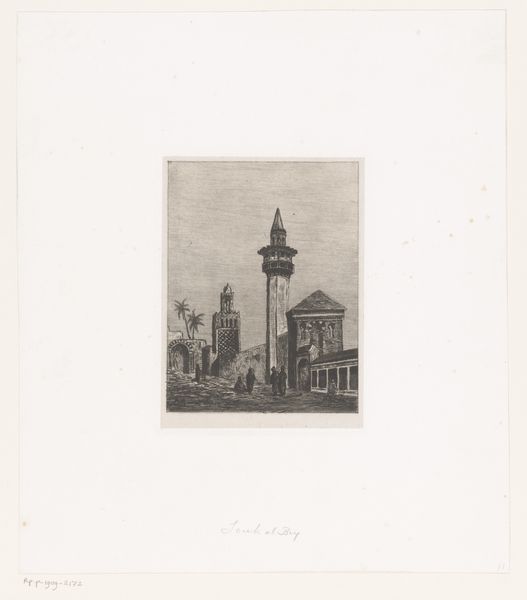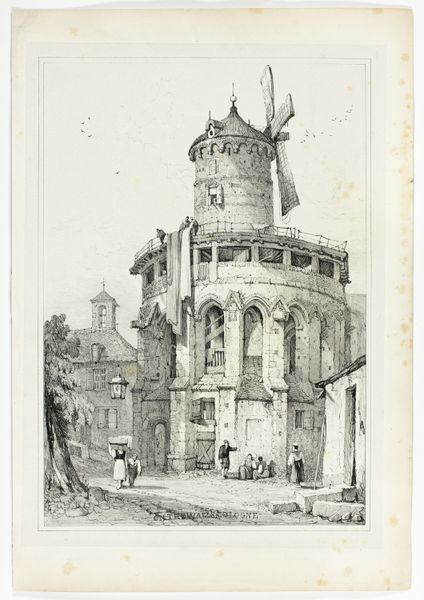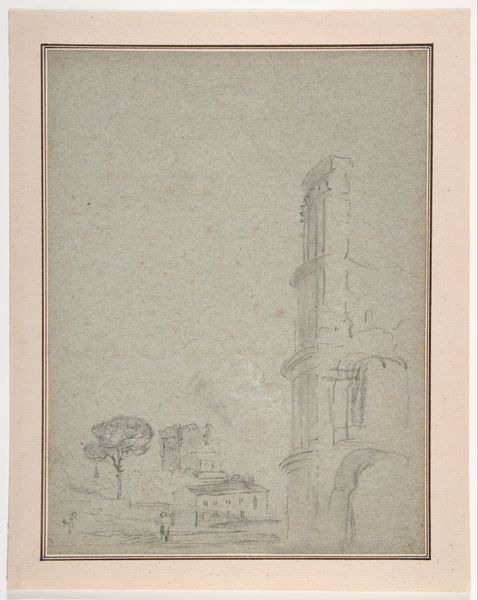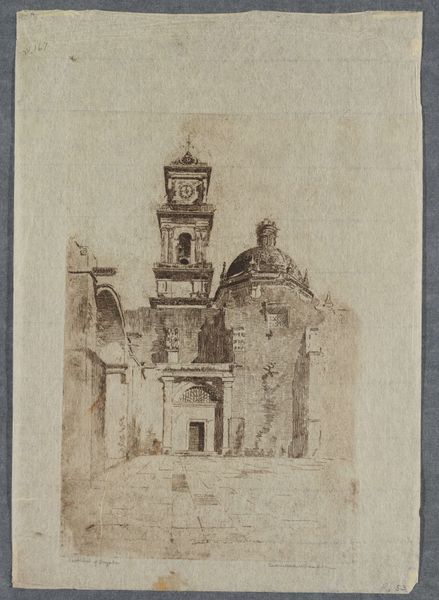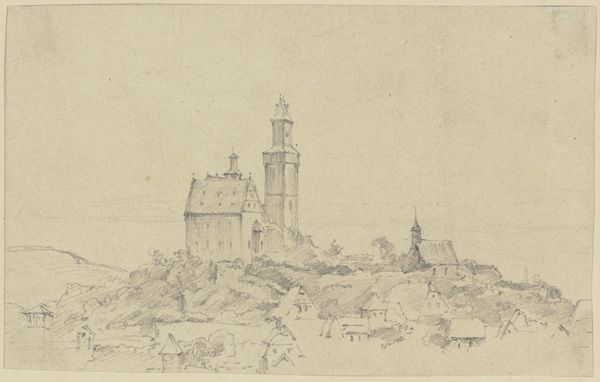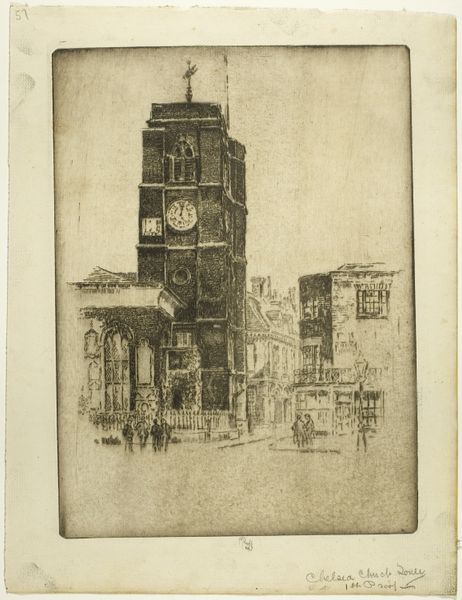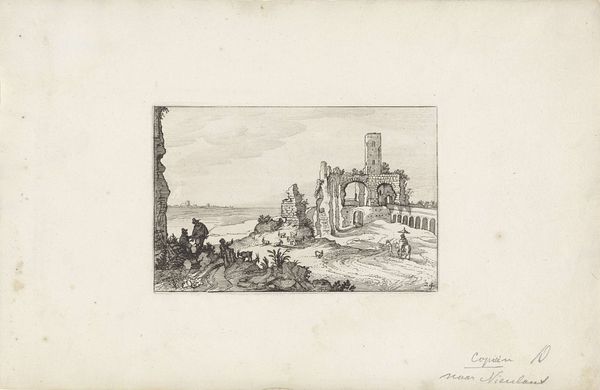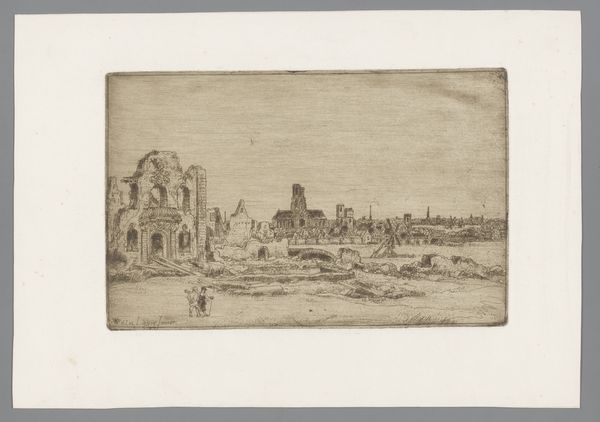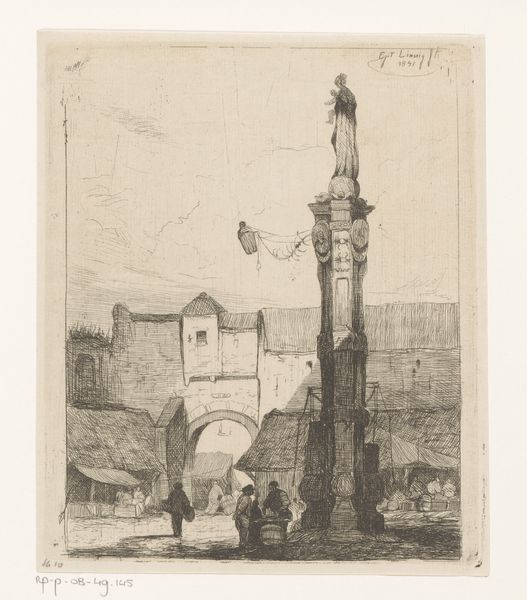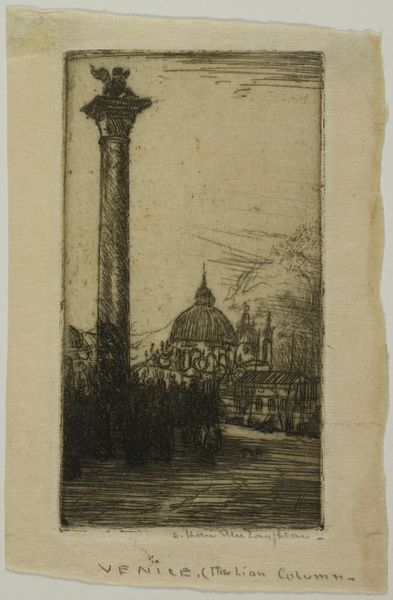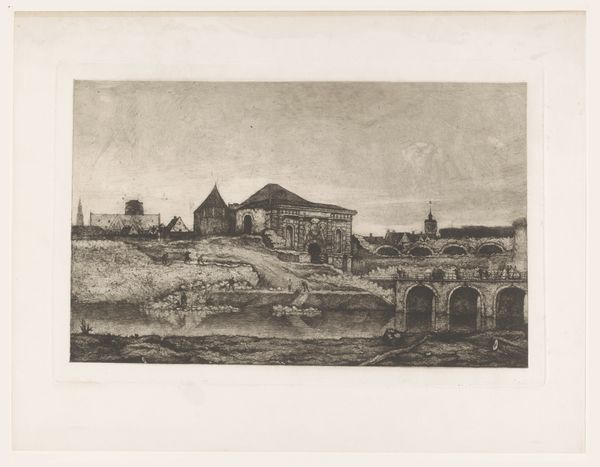
drawing, etching, paper, ink
#
drawing
#
etching
#
landscape
#
etching
#
paper
#
ink
#
orientalism
#
cityscape
#
islamic-art
Dimensions: height 158 mm, width 120 mm
Copyright: Rijks Museum: Open Domain
Curator: Let's consider this piece titled "Bazaar en moskee in Tunis" by Vicomte Arthur-Jean Le Bailly d'Inghuem, created around 1875. It's an etching, ink on paper. Editor: My immediate impression is one of delicacy and a slightly faded grandeur. The fineness of the etching lends itself well to depicting architectural detail. Curator: Indeed. As a product of its time, the etching participates in a larger discourse around Orientalism, and it prompts us to consider how 19th-century European artists visually constructed notions of the East for a European audience. Consider the institutional frameworks, the art market... all shaping what was deemed "exotic" or "worthy" of artistic representation. Editor: From a material perspective, it’s interesting to consider the artist’s access to these sights, the modes of transportation available to him, and then the technical skill to translate what he saw into the repeatable form of an etching. Each line, each shadow represents labor and decision-making. It makes you wonder about the process. Was this based on direct observation or sketches? Curator: And consider where and for whom the etching would have been sold or displayed. Was it circulated among fellow artists, or was it destined for a bourgeois parlor, feeding a specific kind of colonial fantasy? These kinds of images certainly played a role in the West's cultural understanding—or rather misunderstanding—of the Arab world. The mass reproduction allowed the easy spread of these constructed ideals. Editor: The reproducibility factor is key. The original experience, the very real Tunis with its vibrant sensory input, is processed and filtered. And the work's value lies not just in artistic vision, but the potential for disseminating that image widely through paper and ink. Curator: It certainly prompts questions about authenticity, the artist's intention versus its societal impact. How can we, as viewers today, confront the image’s potentially problematic roots while acknowledging its artistic merit? Editor: It’s a reminder of art’s capacity both to capture a moment and to participate in power dynamics, to shape and to reflect larger societal forces. A small etching like this encapsulates a far larger world, materially and ideologically.
Comments
No comments
Be the first to comment and join the conversation on the ultimate creative platform.
